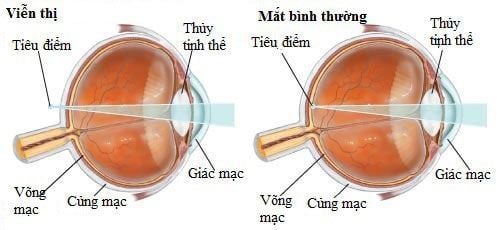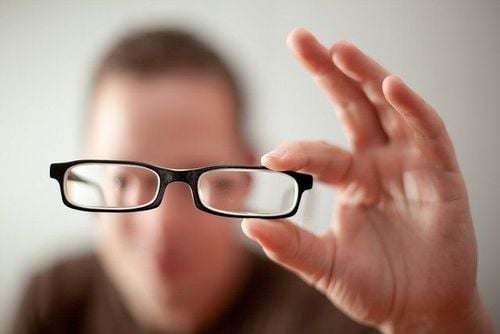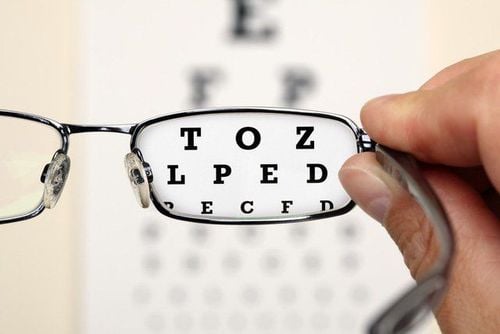This is an automatically translated article.
The article was professionally consulted by Specialist Doctor II Nguyen Thai Hung - Department of Medical Examination & Internal Medicine - Vinmec Danang International Hospital. Specialist II Nguyen Thai Hung has 13 years of experience as a doctor treating eye diseases.Unlike farsightedness and nearsightedness, which are clearly distinguished, many people mistakenly believe that farsightedness and presbyopia are the same disease. However, this is not true, farsightedness and presbyopia have some common features but the causes are very different.
1. What is farsightedness?
Farsightedness is a condition in which the eye cannot clearly see near objects, but can clearly see distant objects. Farsightedness can affect a person's ability to focus. In some cases of severe farsightedness, patients can only see things at a great distance, objects near the eyes cannot be fully adjusted, blurred vision, long-term exposure easily leads to amblyopia. Farsightedness is a refractive error that can run in families. Symptoms of presbyopia are quite similar to presbyopia in the elderly.
2. What is presbyopia?
Presbyopia usually appears from the age of 40 onwards or sometimes earlier or later, but with age, presbyopia becomes more severe. The exact mechanism of presbyopia is still not fully understood, but it is clear that it is caused by the hardening of the lens that reduces its elasticity.The telltale sign of presbyopia is the inability to clearly see the details of objects within reach (for example, fingerprints, text on phones, books, watches, etc.). Especially in low light conditions, people with presbyopia can almost not read these details and if you want to see clearly, you have to take them far away from your eyes, the distance is getting farther and farther depending on the degree of presbyopia. When the patient needs more light to see, his eyes have to squint but can't be maintained for long but have to stop because of eye fatigue, tearing, headache.

3. Distinguishing farsightedness and presbyopia
Farsightedness and presbyopia are not the same thing as many people think. Presbyopia is an eye defect caused by impaired accommodation, leading to a reduced ability to focus on objects, similar to gray hair and skin wrinkles. Presbyopia and farsightedness are similar in that near vision is not clear; All can be treated by wearing special glasses or can be surgically corrected.However, presbyopia is not the same as farsightedness because presbyopia is an acquired refractive error (aberration in the refraction of light due to an imbalance in the ratio between the length of the eyeball and the lens) that can be caused by at a young age; Presbyopia is a phenomenon caused by the natural aging process of the body (usually occurring in people over 40 years old), not a refractive error but a physiological change of the eyes when old.
In addition, people with presbyopia always have to adjust their eyes whether looking far or near, while patients with presbyopia do not need to adjust their eyes when looking at a distance.
Please dial HOTLINE for more information or register for an appointment HERE. Download MyVinmec app to make appointments faster and to manage your bookings easily.














